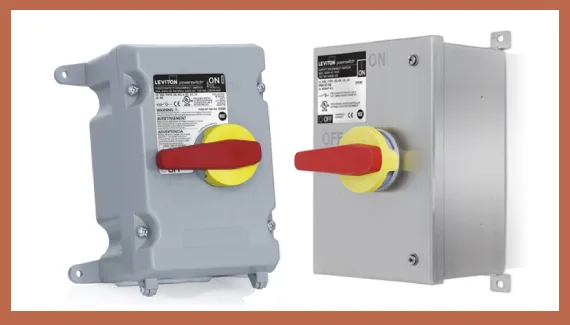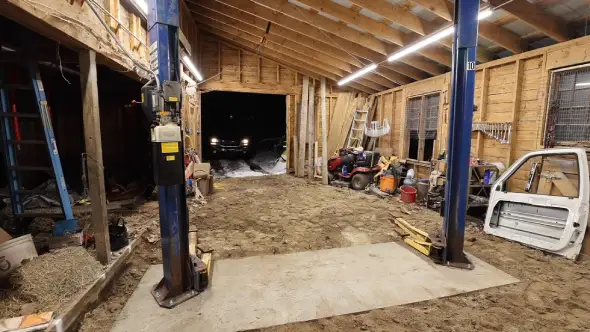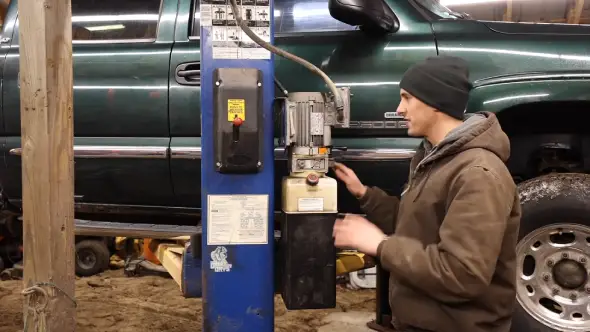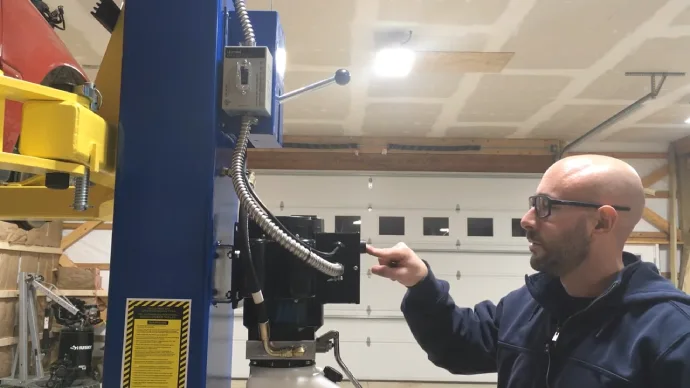Last Updated on May 7, 2023
If you have a garage lift, it’s time to give your safety setup an upgrade. According to the National Electrical Code (NEC), all electrical equipment, including garage lifts, must be equipped with a readily accessible disconnect switch.
This safety feature is essential to ensure that power can be quickly and easily disconnected in case of an emergency or to perform maintenance. Any garage lift must have a proper disconnect switch installed for optimum safety and functionality.
Fortunately for us DIY’ers (or those who don’t want pesky service fees), installing one is pretty straightforward. We’ll talk about different types of switches and how exactly to get yours set up correctly.
Ready? Let’s dive into why having this essential piece of equipment can make sure any maintenance or emergency procedure goes off without a hitch.
Is a Disconnect Switch Needed for a Garage Lift: Why?

It’s not just a safety measure – having a disconnect switch installed on your garage lift is downright essential. Not sure why? Here are some of the top reasons this piece of engineering brilliance should be part of every technician and homeowner’s setup.
1. Prevents Unintentional Start-Up of Lift Motor
Installing a disconnect switch prevents the lift motor from unexpectedly turning on or off. This is especially important when dealing with complex systems, as sudden changes in power can cause severe damage to both motors and other components.
By incorporating a disconnect switch into your auto lift system, you can ensure that no unintentional start-up will occur while also providing greater control over how and when the lift operates.
2. Mitigates Risk in Case of Electrical Fault or Surge
If there’s an electrical fault or surge, a disconnect switch can help mitigate potential damage by safely cutting power to the motor.
Without this safety measure, electrical faults could lead to short circuits, resulting in overheating and even fires in certain cases.
If you install a disconnect switch right away, you’ll significantly reduce this risk and protect your system from power surges or power changes.
3. Allows Manual Control over the Operation or Movement of the Lift Motor
Having access to manual control over the operation of your lift motor is extremely useful for day-to-day tasks like maintenance work or emergency situations where an immediate shutdown is needed for safety reasons.
A disconnect switch makes it easier for you to control when and how your car lift runs without having to rely on complicated computer systems or timers.
This also eliminates any guesswork regarding managing your lifts during times of need. It makes response times faster and overall efficiency better.
4. Compliance with Electrical Codes
If you want to stay in compliance with local regulations, all buildings with high-voltage systems (including garages) must have a disconnect switch.
Garages wouldn’t pass inspections and stay in compliance with current laws without this piece of hardware. So installing one should always be considered when designing an electrical system.
What Are the Different Types of Disconnect Switches for Garage Lifts?

Regarding garage lifts, there are two main types of disconnect switches that can ensure your safety. Whether you prefer an easy-to-access option or one tucked away from curious fingers, this is the perfect way to protect yourself and those around you.
1. Pull-out Switch
Pull-out switches are one of the most common types of disconnect switches used for garage lifts. They are manually operated and mounted on the wall near the lift, usually within easy reach.
To turn off the lift, you’ll need to pull the switch out of its holder physically to remove it from its socket.
Pull-out switches are relatively easy to use and provide a high degree of safety since it requires physical effort for someone to turn off the power.
These types of switches are also cost-effective since they are relatively inexpensive and require minimal maintenance.
2. Rotary Switch
Rotary switches are another type of manual disconnect switch commonly used for garage lifts. Like pull-out switches, they’re typically attached to the wall near the lift and can be easily accessed by anyone to turn off the power.
Unlike pull-out switches, however, rotary switches must be rotated to deactivate them.
Although this method might take a bit more effort, it adds an extra layer of security since you have to actively rotate the switch to deactivate it. This makes it less likely that electricity will accidentally be shut off by mistake or without proper authorization.
How to Install a Disconnect Switch for a Garage Lift?

Ready to take on the challenge of installing a disconnect switch for your garage lift? With electrical knowledge and experience, plus some necessary skills and equipment – you can tackle this project.
Just remember to get help from an expert electrician if it feels too difficult. If not, follow these general steps:
First, turn off the power to the garage circuit at the main electrical panel. Then, locate the appropriate area for the disconnect switch, usually near the lift motor or control box but within reach of the operator.
After that, install a metal or plastic electrical box in the wall near the lift that is large enough to accommodate the disconnect switch.
Next, connect the incoming power wires to the switch using wire nuts or other suitable connectors. Make sure everything is secure, and double-check your work once you’re done connecting them.
As soon as that’s done, attach your new switch to the electrical box and make sure it’s secured with screws.
Once attached, connect any outgoing power wires from your switch to your lift motor or control box using wire nuts or other connectors. Again making sure they are secure before moving on.
Finally, test out your new switch by turning it off and on again several times to make sure it works properly. This step is especially important as faulty wiring could result in an electrical accident.
Once you’re confident that all connections have been made correctly and are secure, replace your electrical box cover and turn back on power at your main electrical panel.
With that last step complete, you’ll now be able to safely use a switch when turning on/off your garage lift.
Does the Garage Lift Disconnect Switch Have a Fuse?
It really depends on the type of switch you are using. Some disconnect switches come with a built-in fuse for protection, while others do not.
Generally, most garage lift disconnect switches include a fuse as an additional layer of protection. Disconnect switches can be divided into two primary categories: fusible and non-fusible.
Within these two types, they can be further divided into four different subtypes: enclosed fusible, enclosed non-fusible, panel mount fusible, and panel mount non-fusible.
Each type has its own unique features and benefits, but all of them offer some degree of overcurrent protection due to their fuses or lack thereof.
What Is the Minimum Height for a Garage Lift Disconnect Switch?

The minimum height requirement of a garage lift disconnect switch varies depending on local building codes and safety regulations. Generally, these switches should be installed at a height that is easily accessible to the operator and within reach.
This is typically around 6.5 feet from the floor. It’s essential to consult your local codes when installing any equipment to ensure compliance with all safety standards and requirements.
Ensure Lifelong Garage Safety: Install a Disconnect Switch Today
You don’t want to take chances regarding safety, which is why your garage lift needs a disconnect switch.
Disconnect switches make maintenance and emergency operations easier. No fiddling with the power or worrying about potential risks of leaving electrical equipment running unnecessarily.
But be sure you comply with NEC requirements before installation by enlisting an electrician’s help. With the right kind in place, your garage will stay safe and operational for as long as possible, with peace of mind guaranteed.
